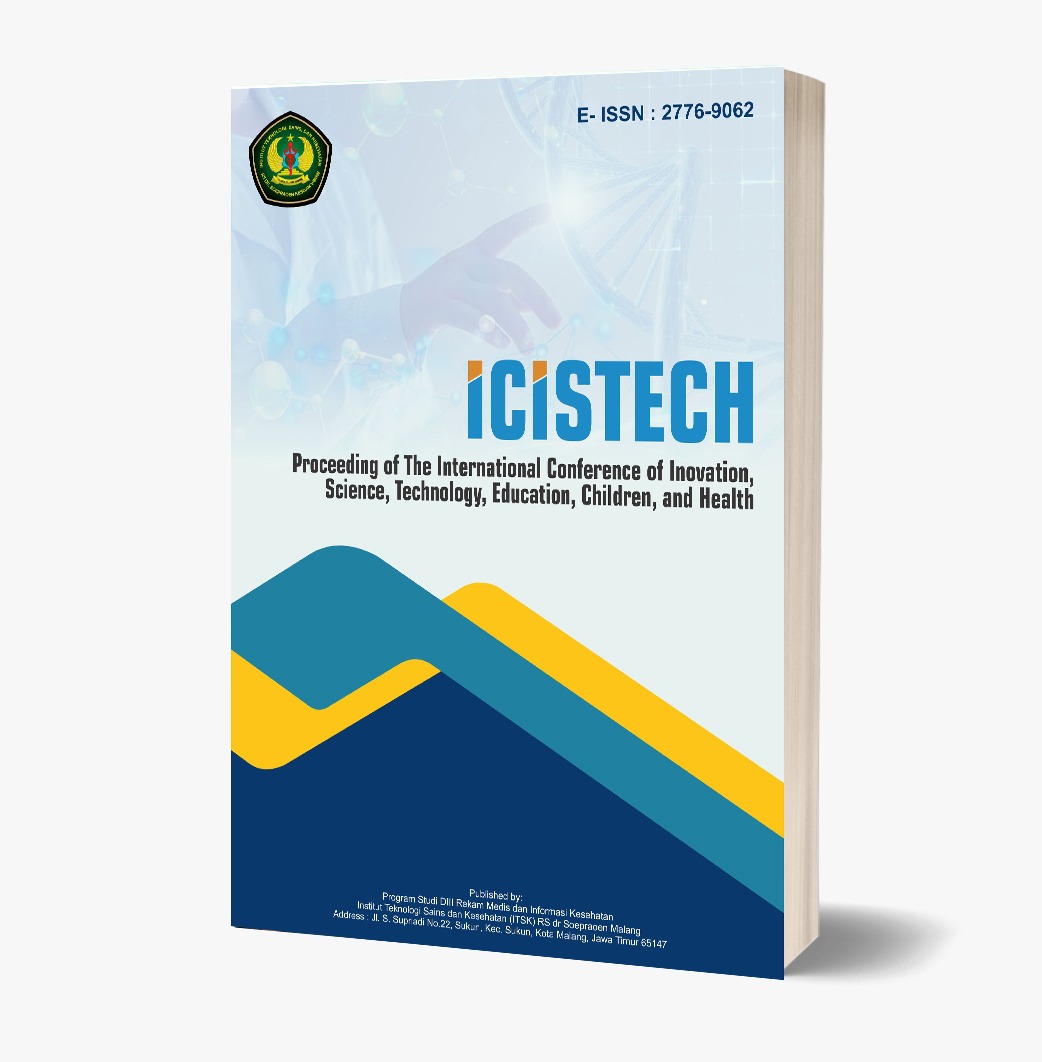Does a caesarean affect breastfeeding initiation? Evidence among women who delivered in health facilities
DOI:
https://doi.org/10.62951/icistech.v3i1.56Keywords:
breastfeeding, caesarean, health facility, initiation, normal deliveryAbstract
Introduction: Breastfeeding initiation is internationally recommended due to its benefits on maternal and child health. The aim of the study was to determine the relationship between mode of delivery and early breastfeeding initiation among women who delivered in health facilities. Methods: The study based on The Indonesia Demographic and Health Survey 2017. There were 5,369 women whose children born in the last 24 months preceding the survey in health facilities in Indonesia. Descriptive statistics and binary logistic regression were used for data analysis. The complex sample design was performed for analyses. Results: Of the women who had given birth to at least 24 months preceding the survey in health facilities, 57 percent was found to practice initiation breastfeeding. The likelihood of breastfeeding initiation among women who delivered in health facilities was associated with mode of delivery, which women with caesarean delivery (OR = 0.33; 95% CI: 0.29-0.38) were less likely to practice breastfeeding initiation compared with those with normal vaginal delivery after adjusted by socio-economic factors. Moreover, women age 35-49 years and non-working women were found to have higher probabilities to practice breastfeeding initiation. Conclusion: Maternal age, working status and type of delivery were significantly influencing the practice of early initiation of breastfeeding among women who delivered in health facilities. Therefore, education and promotion of breastfeeding initiation need to be improved, so couples can raise their knowledge and awareness of the benefits of breastfeeding initiation then implement it.
References
Awi, D. D., & Alikor, E. A. D. (2006). Barriers to timely initiation of breastfeeding among mothers of healthy full-term babies who deliver at the University of Port Harcourt Teaching Hospital. Nigerian Journal of Clinical Practice, 9(1), 57–64.
Dagher, R. K., McGovern, P. M., Schold, J. D., & Randall, X. J. (2016). Determinants of breastfeeding initiation and cessation among employed mothers: A prospective cohort study. BMC Pregnancy and Childbirth, 16(1), 1–11. https://doi.org/10.1186/s12884-016-0965-1
Erbaydar, N. P., & Erbaydar, T. (2020). Relationship between caesarean section and breastfeeding: Evidence from the 2013 Turkey Demographic and Health Survey. BMC Pregnancy and Childbirth, 20(1), 1–9. https://doi.org/10.1186/s12884-020-2732-6
Ezeh, O. K., Ogbo, F. A., Stevens, G. J., Tannous, W. K., Uchechukwu, O. L., Ghimire, P. R., & Agho, K. E. (2019). Factors associated with the early initiation of breastfeeding in the Economic Community of West African States (ECOWAS). Nutrients, 11(11), 1–16. https://doi.org/10.3390/nu11112765
Gayatri, M., & Dasvarma, G. L. (2020). Predictors of early initiation of breastfeeding in Indonesia: A population-based cross-sectional survey. PLoS ONE, 15(9), 1–15. https://doi.org/10.1371/journal.pone.0239446
Ghimire, U. (2019). The effect of maternal health service utilization on early initiation of breastfeeding among Nepalese mothers. International Breastfeeding Journal, 14(1), 1–8. https://doi.org/10.1186/s13006-019-0228-7
John, J. R., Mistry, S. K., Kebede, G., Manohar, N., & Arora, A. (2019). Determinants of early initiation of breastfeeding in Ethiopia: A population-based study using the 2016 Demographic and Health Survey data. BMC Pregnancy and Childbirth, 19(1), 1–10. https://doi.org/10.1186/s12884-019-2211-0
Karim, F., Salam Khan, A. N., Tasnim, F., Kabir Chowdhury, M. A., Billah, S. M., Karim, T., El Arifeen, S., & Garnett, S. P. (2019). Prevalence and determinants of initiation of breastfeeding within one hour of birth: An analysis of the Bangladesh Demographic and Health Survey, 2014. PLoS ONE, 14(7), 1–12. https://doi.org/10.1371/journal.pone.0220224
Liben, M. L., & Yesuf, E. M. (2016). Determinants of early initiation of breastfeeding in Amibara district, Northeastern Ethiopia: A community-based cross-sectional study. International Breastfeeding Journal, 11(1), 1–7. https://doi.org/10.1186/s13006-016-0067-8
Mukora-Mutseyekwa, F., Gunguwo, H., Mandigo, R. G., & Mundagowa, P. (2019). Predictors of early initiation of breastfeeding among Zimbabwean women: Secondary analysis of ZDHS 2015. Maternal Health, Neonatology and Perinatology, 5(1), 1–7. https://doi.org/10.1186/s40748-018-0097-x
Ndirangu, M. N., Gatimu, S. M., Mwinyi, H. M., & Kibiwott, D. C. (2018). Trends and factors associated with early initiation of breastfeeding in Namibia: Analysis of the Demographic and Health Surveys 2000-2013. BMC Pregnancy and Childbirth, 18(1), 1–10. https://doi.org/10.1186/s12884-018-1811-4
Nkoka, O., Ntenda, P. A. M., Kanje, V., Milanzi, E. B., & Arora, A. (2019). Determinants of timely initiation of breast milk and exclusive breastfeeding in Malawi: A population-based cross-sectional study. International Breastfeeding Journal, 14(1), 1–9. https://doi.org/10.1186/s13006-019-0232-y
Senanayake, P., O’Connor, E., & Ogbo, F. A. (2019). National and rural-urban prevalence and determinants of early initiation of breastfeeding in India. BMC Public Health, 19(1), 1–13. https://doi.org/10.1186/s12889-019-7246-7
Smith, E. R., Hurt, L., Chowdhury, R., Sinha, B., Fawzi, W., & Edmond, K. M. (2017). Delayed breastfeeding initiation and infant survival: A systematic review and meta-analysis. PLoS ONE, 12(7), 1–16. https://doi.org/10.1371/journal.pone.0180722
Tewabe, T. (2016). Timely initiation of breastfeeding and associated factors among mothers in Motta town, East Gojjam zone, Amhara regional state, Ethiopia, 2015: A cross-sectional study. BMC Pregnancy and Childbirth, 16(1), 1–7. https://doi.org/10.1186/s12884-016-1108-4
World Health Organization. (2003). Infant and young child feeding: A tool for assessing national practices, policies, and programmes.
Downloads
Published
How to Cite
Issue
Section
License
Copyright (c) 2024 Proceeding of The International Conference of Inovation, Science, Technology, Education, Children, and Health

This work is licensed under a Creative Commons Attribution-ShareAlike 4.0 International License.













